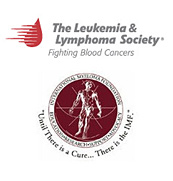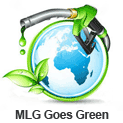Can a Toxic Chemical Be a Trade Secret?
by Raphael Metzger, Esq.
The client was employed for many years in industry, daily using a chemical product in his work. The client has been diagnosed with a rare cancer which you suspect was caused by the client's exposure to the chemical product. The client doesn't know what the product is; he just knows it by its tradename.
Being a knowledgeable toxic tort lawyer, you call the client's employer and request the Material Safety Data Sheet (MSDS) for the product. You know manufacturers are required to list the hazardous ingredients of their chemical products on these sheets, so you read the MSDS with excitement as the fax arrives.
There is one hazardous ingredient listed on the MSDS and it comprises a large percentage of the product. But you don't see the usual long, tongue-twisting chemical name in the space for the name of the ingredient, or the usual chemical identification number. Instead, the MSDS just says "trade secret ingredient." You call the manufacturer's emergency response number listed on the sheet, and ask the manufacturer what the ingredient is. You are politely told that the identity of the ingredient can't be disclosed, because it is a trade secret. No matter how much you cajole or threaten the polite voice on the phone, you can't get the critical information.
You suspect that the manufacturer's concealment of the identity of the hazardous ingredient is unlawful, but are shocked to learn that the OSHA Act allows employers to conceal the identity of hazardous ingredients of their products if they claim trade secrecy.
When a co-worker develops the same rare cancer, you file a toxic tort case and immediately propound an interrogatory asking for the identity of the hazardous ingredient. The manufacturer's attorney serves a response objecting to the interrogatory, claiming that the information is a trade secret. You bring a motion to compel the manufacturer to answer the interrogatory. Who wins?
Willson v. Superior Court
The issue was first raised in the early case of Willson v. Superior Court (1924) 66 Cal.App. 275, 279, 225 P. 881. In Willson, a plaintiff was injured when an "actinic flare" manufactured by the defendant, Willson, exploded in his hand. At trial, plaintiff's counsel asked Willson what the ingredients of the flare were, but Willson refused to answer, claiming that the chemical composition of the flare was a trade secret. The judge ordered Willson to answer the question and held him in contempt when he refused to do so. Considering Willson's writ petition, the Court of Appeal determined that the information sought was critical to the plaintiff's case, concluded that the contempt order was proper, and discharged the writ.
The Court succinctly stated: "The right of the manufacturer to the protection of his trade secret ought to yield to the superior right of an innocent person who has suffered injury through no fault of his own, but assumedly through the negligence of the manufacturer.” The court wrote:
It would, indeed, be a dangerous principle, and one inimical to the standards of justice, to hold that the right of an injured innocent person to redress should be withheld solely because the person causing the injury and responsible therefor was in possession of certain facts, however consequential to his private interests, without the disclosure of which such right could not be determined or enforced, and thus, in effect, uphold the wrongdoer in his wrongdoing.
No man is entitled to be protected in his property right to a trade secret where, by the exercise of such right, he has wrought an injury to another and the disclosure of such secret is indispensable to the ascertainment of the truth and the ultimate determination of the civil rights of the parties." Id., 66 Cal.App. at 279-280.
Bridgestone/Firestone, Inc. v. Superior Court
The issue was revisited and the law was recently clarified in Bridgestone/Firestone, Inc. v. Superior Court (1992) 7 Cal.App.4th 1384, 9 Cal.Rptr.2d 709, a case alleging that a defective tire caused the plaintiff's death.
In discovery, the plaintiff served interrogatories seeking manufacturing specifications for the tire involved in the accident and other tires of the same type and size. The specifications include code numbers which correlate with formulas or "recipes" necessary to fully translate and describe each of the rubber compound components identified by the code numbers. Bridgestone objected, claiming the information sought was a trade secret, but was ordered to answer the interrogatories pursuant to protective order.
Rather than provide the information, Bridgestone sought a writ of mandate. The Court of Appeal granted the petition and, in so doing, "specif[ied] guidelines for trial courts to evaluate trade secret discovery requests in future cases." Acknowledging the rule that the party claiming a privilege has the burden of establishing it, the Bridgestone court held that the manufacturer, as the party asserting the trade secret privilege, bore the burden of establishing its existence. The court held:
Thereafter, the party seeking discovery must make a prima facie, particularized showing that the information sought is relevant and necessary to the proof of, or defense against, a material element of one or more causes of action presented in the case, and that it is reasonable to conclude that the information sought is essential to a fair resolution of the lawsuit.
It is then up to the holder of the privilege to demonstrate any claimed disadvantages of a protective order. . . . [T]he burden is upon the trade secret claimant to demonstrate that an alternative to disclosure will not be unduly burdensome to the opposing side and that it will maintain the same fair balance in the litigation that would have been achieved by disclosure." Id.
Applying these rules, the court found that Bridgestone had established that its tire formula was a trade secret, in part, based on expert testimony that it is impossible to "reverse engineer" a vulcanized tire (i.e., to determine formulas from the finished product).
The plaintiff's expert had conceded that he had been able to draw conclusions about problematic design based on the specifications without formula formation in another case. Since the plaintiff's expert had not described with any precision how or why the formulas were a predicate to his ability to reach conclusions in the subject case, the Court concluded that nothing in the record demonstrated the necessity of the formula information to the plaintiff's ability to prove the case, and granted the writ petition.
Although the Bridgestone court held the manufacturer bears the burden of proving the existence of a trade secret, it didn't specify a manufacturer's evidence necessary to sustain its burden of proof on this threshold issue.
Futurecraft Corp. v. Clary Corp.
The leading case on what constitutes a trade secret is Futurecraft Corp. v. Clary Corp. (1962) 205 Cal.App.2d 279, 23 Cal.Rptr. 198, which explains: "An exact definition of a trade secret is not possible. Some factors to be considered in determining whether given information is one's trade secret are:
1. the extent to which the information is known outside of his business;
2. the extent to which it is known by employees and others involved in his business;
3. the extent of measures taken by him to guard the secrecy of the information;
4. the value of the information to him and to his competitors;
5. the amount of effort or money expended by him in developing the information;
6. the ease or difficulty with which the information could be properly acquired or duplicated by others." Id. at 289.
These are not easy factual requirements for a manufacturer to establish. Attorneys representing manufacturers often assert the trade secret privilege, even with respect to information that is clearly not secret. Sometimes the privilege is asserted merely to thwart a plaintiff's legitimate discovery. Rarely does a manufacturer provide competent declarations to establish a factual basis. Often, the requirements cannot be established because the information isn't a secret at all.
Today, the ingredients of most chemical products can be determined with ease in many laboratories, by means of gas chromatography, mass spectrometry, and other scientific tests. If the information is easily discovered by reverse engineering or chemical testing, it is doubtful that it could be considered a trade secret.
Conclusion
Although the analysis of the Bridgestone court is instructive, most claims of trade secret protection in toxic tort cases should fail simply because the information sought is not a trade secret and, if the defendant is put to the task of proving trade secrecy, will be unable to satisfy its initial burden of proof on this threshold issue.
Putting a chemical manufacturer to its proofs on this issue makes good sense, because toxic chemicals, by their very nature, have the propensity to cause substantial harm to people. As one astute congressional committee wrote: "No trade secret can justify exposing great numbers of American workers to cancer-causing agents or other toxic chemicals." Chemical Dangers in the Workplace: 34th Report by the Committee on Government Operations 94th Cong. 2d Sess., Rep. No. 94-1688 (Sept. 27, 1976) at p. 11.
The answer to the question whether a toxic chemical can be a trade secret is therefore probably "no" -- at least in toxic tort cases where the chemical is alleged to have caused the plaintiff's toxic injury.
Raphael Metzger is the principal of the Metzger Law Group, a Professional Law Corporation. His firm concentrates its practice on occupational cancer, lung disease, and toxic organ failure cases. The firm’s offices are located in Long Beach, California.




